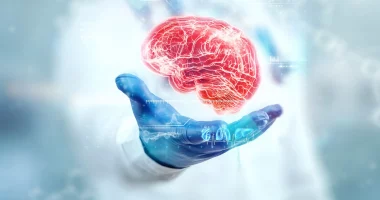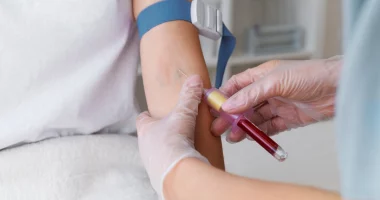Amyloidosis is an infrequent condition characterized by the accumulation of amyloid proteins in the body. It is not like other proteins that contribute to bodily functions, amyloid proteins can be harmful, leading to organ damage. This buildup primarily affects vital organs such as the heart, kidneys, and liver, disrupting their normal functions. The accumulation of amyloid in these organs can impair their ability to perform essential tasks, potentially resulting in severe complications and impacting overall health.
The damaging effects of amyloidosis underscore the importance of early detection and effective management strategies. Given its propensity to target critical organs, timely diagnosis and appropriate treatment are crucial for minimizing damage and improving outcomes for individuals with the condition. Understanding the underlying mechanisms of amyloidosis and its impact on specific organs is essential for developing tailored treatment approaches that address both the symptoms and the underlying causes of the disease.
This article will explain what amyloidosis is, what causes it, and what signs to look out for. It will also talk about how doctors take care of people with amyloidosis.
Causes
Amyloidosis happens when the body makes amyloid proteins. The reasons why this happens can differ depending on which type of amyloidosis someone has.
Amyloidosis can either affect just one organ or spread throughout the body, impacting multiple organs and systems.
There are different types of amyloidosis:
- Immunoglobulin light-chain amyloidosis (AL)
- Familial amyloidosis (ATTR)
- Localized amyloidosis (ALoc)
- Secondary amyloidosis (AA)
- Beta-2 microglobulin amyloidosis (Abeta2m)
- Other familial amyloidoses
AL amyloidosis is the most common type, where the full form of “AL” is “amyloid” and “light chain.” It involves antibody proteins developing in the bone marrow’s plasma cells.
AA amyloidosis occurs when amyloid proteins build up in response to another illness.
Familial amyloidosis, known as ATTR, can be caused by a gene mutation passed down through families.
Risk factors
While anyone can get amyloidosis, certain things can make it more likely to happen:
- Age: Amyloidosis can happen in young adults, but it’s most common between 50 and 80 years old.
- Family History: If someone in your family has amyloidosis, especially a parent, you might have a higher chance of getting it too because there’s a kind that runs in families.
- Gender: About two-thirds of individuals with one type of amyloidosis, called AL, are men.
- Dialysis: People who need long-term dialysis for kidney problems have a higher risk of a specific kind of amyloidosis.
- History of Inflammatory Disease: Some diseases like arthritis or inflammatory bowel disease can make amyloidosis more likely. For example, around half the people with a type called AA amyloidosis have rheumatoid arthritis.
Symptoms
Symptoms of amyloidosis stem from the disruption of normal organ functions caused by the buildup of amyloid proteins. The specific symptoms experienced can vary depending on which organs are affected by the condition.
Typical symptoms may include weakness, unexplained weight loss, swelling (known as edema), nausea, dizziness, chest pain, uncommon heart rhythms, swelling around the eyes, and hoarseness. These signs can often indicate that amyloidosis is affecting multiple organs within the body.
In some cases, amyloid deposits may accumulate primarily in one organ without spreading extensively to other areas. For instance, these deposits may occur on the bladder, skin, or larynx, leading to localized symptoms related to those particular organs.
However, it is more common for amyloidosis to impact several organs simultaneously, causing a range of symptoms that reflect the dysfunction of multiple bodily systems. Understanding the diverse manifestations of amyloidosis is crucial for accurately diagnosing and effectively managing the condition.
Diagnosis
Diagnosing amyloidosis can be tricky because its symptoms can look like those of other diseases, especially if it affects organs like the kidneys. Since amyloidosis is rare, it might take a while for doctors to figure out what’s going on. But getting the right diagnosis is super important so that treatment can be right.
Doctors use different tests to figure out if someone has amyloidosis:
- Tissue Biopsy: This involves taking a small piece of tissue from under the skin in the belly or from an organ to examine for amyloid deposits.
- Bone Marrow Biopsy: Doctors might take a sample of bone marrow from the hip bone to see if there are amyloid deposits there.
- Blood and Urine Tests: These tests help figure out which organs are affected. For instance, urine tests can show if the kidneys are damaged, while blood tests can reveal problems with the heart. These tests give clues about what’s going wrong inside the body.
Treatment
While there’s no cure for amyloidosis yet, treatments are available to manage the condition effectively. The goal of treatment is to slow down the disease’s progression, reduce symptoms, and enhance the patient’s quality of life.
Treatment plans are tailored to each individual based on the seriousness of their symptoms and the specific type of amyloidosis they have. Several therapies aim to decrease the development of amyloid proteins:
Chemotherapy
This treatment involves using different drugs to target and destroy abnormal blood cells that contribute to the formation of amyloids. Some medications used for treating myeloma, a type of plasma cell cancer, can also be effective for amyloidosis. Chemotherapy drugs such as melphalan, cyclophosphamide, bendamustine, and bortezomib are commonly prescribed. The choice of chemotherapy depends on factors like the patient’s age, the extent of symptoms, and which organs are affected.
Other Medications
Immunomodulatory drugs, like thalidomide, lenalidomide, and pomalidomide, work by altering the immune system’s activity. Monoclonal antibodies, such as daratumumab, mimic the body’s natural immune system and have been approved by the FDA for treating newly examined AL amyloidosis. These medications are usually administered orally or through injections.
Specifically designed for ATTR cardiac amyloidosis, these medications, like tafamidis, stabilize transthyretin proteins and have been shown to reduce the risk of death and cardiovascular hospitalizations.
Each treatment approach is carefully selected based on the individual’s condition, aiming to effectively manage symptoms and improve overall well-being. Regular monitoring and adjustments to the treatment plan may be necessary to ensure optimal outcomes for patients with amyloidosis.
Stem Cell Transplant
Sometimes, after using chemotherapy to kill the abnormal cells making amyloids, doctors might suggest a stem cell transplant. This helps the body make healthy bone marrow.
Not everyone with amyloidosis can have a stem cell transplant, and it’s a complex procedure.
Controlling Underlying Diseases
For AA amyloidosis, treating the main diseases that cause amyloid buildup is crucial. For example, if someone has rheumatoid arthritis, treating it can reduce amyloidosis symptoms.
Supportive Treatment
People might need treatment to manage complications of amyloidosis or make lifestyle changes. This can include medications to help with heart failure or hypertension, dialysis for kidney problems, and dietary changes for digestive issues.
Complications
Amyloidosis can cause many problems because it harms the organs in the body.
- Kidney Damage: Amyloidosis frequent hurts the kidneys. If the kidneys can’t clean out waste from the body, it can make them weak or stop them from working properly.
- Heart Problems: The build-up of amyloid can make the heart not work right. This can cause the heart to beat strangely or not pump blood well, leading to heart failure.
- Nervous System Issues: Amyloidosis can also affect the nervous system, causing problems like numbness, dizziness, trouble with digestion, and joint pain.
Outlook
Right now, there isn’t a cure for amyloidosis, but researchers are still studying it to find one. How someone does with the disease often depends on which organs are affected.
Even though there’s no cure, treatments can help slow down the disease and manage symptoms. Working with a team of doctors who specialize in amyloidosis can help create a plan that fits each person’s needs.
Since amyloidosis is rare, it can be comforting to talk to others who have it. Local or online support groups, like the ones listed by the Amyloidosis Foundation, can be a good place to connect with others who understand what you’re going through.
Summary
Amyloidosis presents challenges due to its lack of a cure, but ongoing research offers hope for better treatments in the future. While the disease affects various organs, tailored treatment plans can slow its progression and manage symptoms effectively. Collaborating with specialists ensures individualized care and support.
Engaging with local or online support groups can provide valuable emotional support and shared experiences for those navigating life with amyloidosis, despite its rarity, understanding and solidarity within the community foster resilience and optimism for the future.








